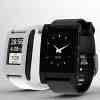Selling Your Invention
Selling your invention requires a certain amount of persistence.
This is a true story that shows you what many successful inventors go through to become successful.
After a few years struggling to market his invention, Peter eventually found success and became a millionaire.
Peter was a new immigrant from Poland who wanted a better life for his family - his wife Margaret and his three children. Although he was a mechanical engineer he could not find work.
In fact, he could barely speak English. Peter eventually got a job washing dishes at a restaurant. In the evening he attended language classes.
Meatballs
Peter's amazing story begins on the day his employer asked him to help with food preparation. Peter wasn't asked to cook but to make meatballs.
Day after day, he would take handfuls of ground beef and roll them into uniform balls of meat. Although Peter was very productive in making meatballs, the work was boring.
He wanted to do something more useful and asked his employer to purchase a meatball-making machine. But Peter learned that there was no such thing as a meatball machine that was affordable and convenient.
Hours upon hours, week after week, Peter made meatballs. He was very good at it - fast, efficient and consistent. But he didn’t understand why there was no invention to make meatballs. He began thinking about how he could invent something and started working on the idea.
Invention
Peter began building and testing various appliances at home but it proved to be difficult and frustrating.
After months of work, he couldn't come up with an invention that would make meatballs any better or faster than he could with his own hands.
One day, while rolling his meatballs, Peter grabbed a cup and placed it over some meat on a counter. He moved the cup in a circular clockwise fashion to see what would happen. When he lifted the cup he had a perfect meatball.
Peter then fastened three cups together - put some meat on a counter - placed the cups over the meat - swirled the cups - and made three perfect meatballs.
He then began designing his new invention.
He took a small square box and placed it over some meat and it produced the same results. Peter then began designing what would become a clear plastic rectangular box with multiple square compartments in it.
It was a cookie-cutter like device, which could be placed over a slab of ground beef so that it separated the meat into each of the square compartments.
Finger holes allowed him to grip the top of the dish. With a few circular rotations of the box he could create a dozen meatballs in a few seconds. The size of the meatballs was determined by how much ground beef was in each compartment.
Patent
Peter had created a simple invention and he was confident that the world would beat a path to his door to buy it. But first, he needed to do a patent search to ensure his invention was new and that no one else had thought of it.
Peter didn't find anyone with a patent on his invention. But to be sure, he needed a patent attorney to do a professional search.
He spoke to an attorney and arranged a payment plan. The lawyer determined that Peter's invention was patentable and a provisional application was prepared and filed.
Retail
Peter was beaming with confidence. He couldn't wait to start selling his invention. He was certain that retail stores would purchase his product. He had a hand-made prototype but decided that he needed some inventory.
He convinced a plastic manufacturer to accept payment terms to create a mold of his invention and to manufacture 1000 units. Though the manufacturer didn't normally do that type of thing, as was the case with the patent attorney, he also agreed to a payment plan.
He now had samples of his invention, inventory and debt payments. It was time to start selling the invention to retail stores.
He would begin with the largest retailer in the world - Walmart.
But Walmart wasn't interested in his invention and neither were dozens of other retailers. In fact, no one was interested in his invention.
It wasn't something consumers were looking for - at least not in retail stores. It would just take up shelf space. There was no demand for an invention to make meatballs - as far as anyone knew.
In Debt
Undaunted and with bills to pay, Peter decided to make a video showing how his meatball maker worked. He thought if people could see a video - they would buy his invention.
To prove he could sell his invention to the public, he arranged a booth at a flea market on weekends. He would show the video and sell his simple invention.
But amidst the hawkers of t-shirts and jewellery, the man with the Polish accent didn’t sell anything.
He thought about approaching restaurants. But there just wasn't enough restaurants serving meatballs to make his product viable.
Money was becoming a problem. People were losing confidence in Peter's invention - except for his wife. Margaret encouraged her husband not to despair and to keep working on his dream.
Needing to pay his debts, Peter approached his accountant to see if he could get some investment capital. But no one was really interested.
It was a difficult time for Peter and his family.
Mail Order
Peter continued speaking with anyone he could about his invention.
Then one day, he met a gentlemen that suggested Peter contact his daughter working for a direct marketing company. The company marketed consumer products by mail order. Peter contacted her and the company agreed to test his product.
After a few months of selling his invention, they were able to sell a few hundred units. Nothing spectacular, but they felt that his invention might do better if it was sold on television.
Television
They decided to approach QVC - the largest shopping channel in the world with over 87 million viewers, most of whom were woman. QVC sold a lot of kitchen related inventions and they might be interested in a meatball maker, simply because they didn't have one.
Peter had to supply 5,000 units packaged in a manner stipulated by QVC. The entire order would be on consignment. QVC would pay nothing. If they sold anything, they would only pay for what they sold. Peter would have to foot the bill to pickup any unsold units.
QVC would arrange for someone else to demonstrate the product on television. They would allow a one-time only 7 minute demonstration of the product. If they were not happy with the sales, they would drop the product - no second chances.
Peter returned home with a mission. He needed to convince his manufacturer to make and package another 5,000 units to be shipped to Philadelphia. The manufacturer agreed to supply the product.
Sales
The studio set in Philadelphia resembled a modern kitchen. A man dressed in a white apron and chef hat stood behind a counter. He mutter a few words for a sound check. Lighting was adjusted for the overhead camera. Two other cameras were positioned in front of the Chef.
A stage hand made some adjustments to the meatball trays that were stacked beside the large slab of ground beef on the counter top. Plates of food with steaming meatballs sat on shelves beneath the counter.
Rehearsals were completed. Telephone operators were ready. The QVC production crew was going live to air.
The Chef introduced himself and proudly announced a sensational new addition to his kitchen appliances. He skilfully moved through his demonstration magically creating dozens of perfect meatballs of varying sizes in a matter of seconds.
There were Swedish meatballs, spaghetti meatballs, sweet and sour meatballs, meatballs for appetizers and meatball soups. The Chef also announced a special bonus for viewers. If they ordered within the next 7 minutes - they would receive the meatball recipe book that he was holding in his hands.
The phones lines lit up and within four minutes all 5,000 meatball makers were gone. Peter's very simple invention was a complete sell out.
QVC scrambled to fulfill the demand and immediately ordered another 10,000 meatball makers.
Meatball Magic ® would eventually gross millions of dollars in sales around the world. When you search for the product on the internet you can find it just about anywhere. It has made Peter Huszcz a wealthy man.
Advice
He would be the first to admit that if he had to do it over again, he would have done things differently. There was no market research. His invention needed to be demonstrated to women who liked to cook. He would have initially approached companies with that type of marketing structure.
Peter believes he was successful because he cared more about promoting the benefits of his product rather than anything else. He admits he didn't exactly know how to find his customers but always believed they existed.
He believes too many inventors give the impression that they are just looking for money, or are worried about getting ripped-off in some manner. "You should focus on finding the market for selling your invention and convince others that it is profitable to sell it," says Peter.
“If there are good benefits to your product, if it has a market, and is potentially profitable - that is what you should be talking about”.


|
| Student gets 1.2 million for his dicycle invention. |

|
| College student gets 10 million in advanced orders. |












